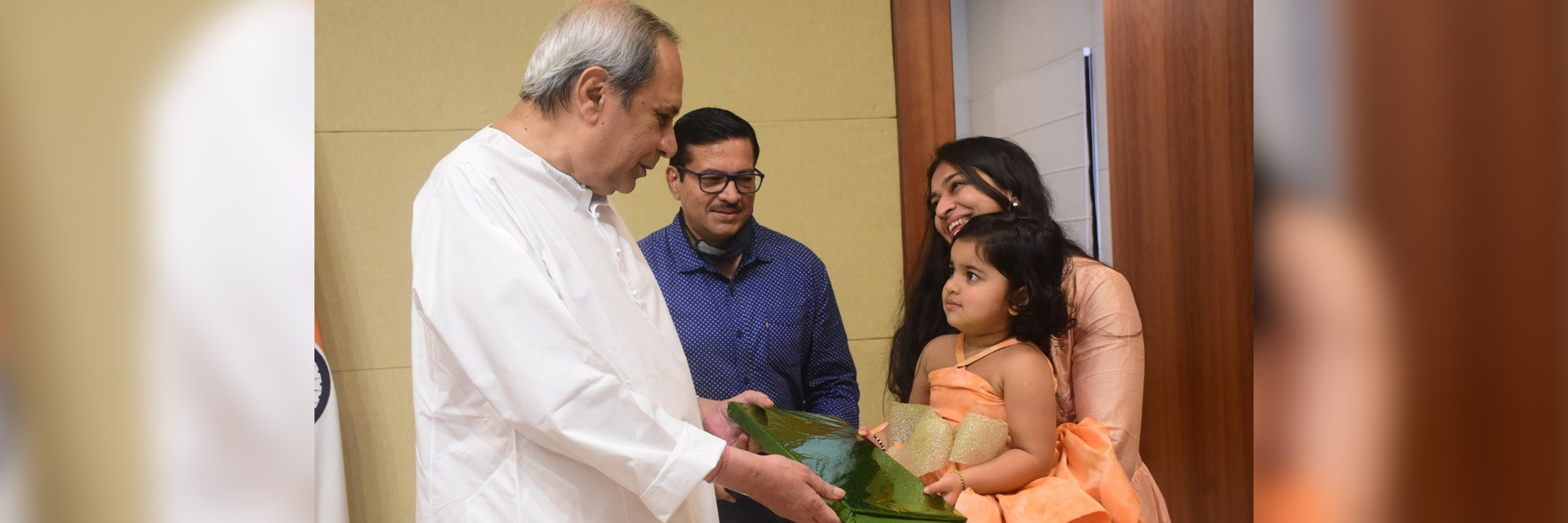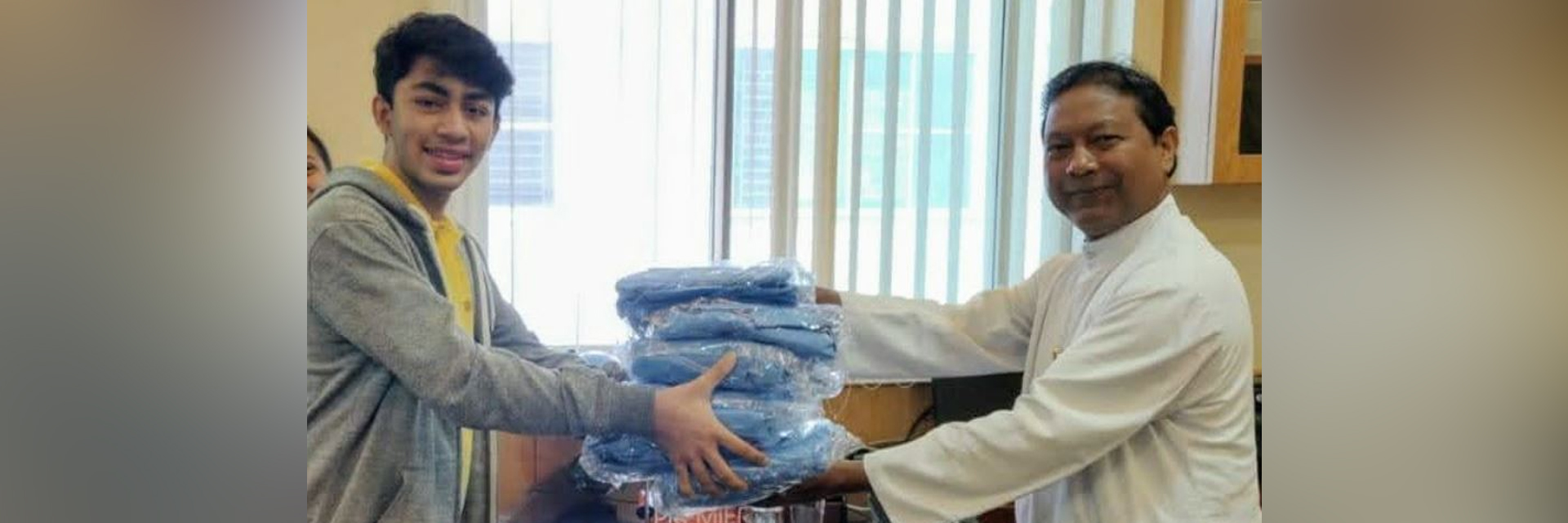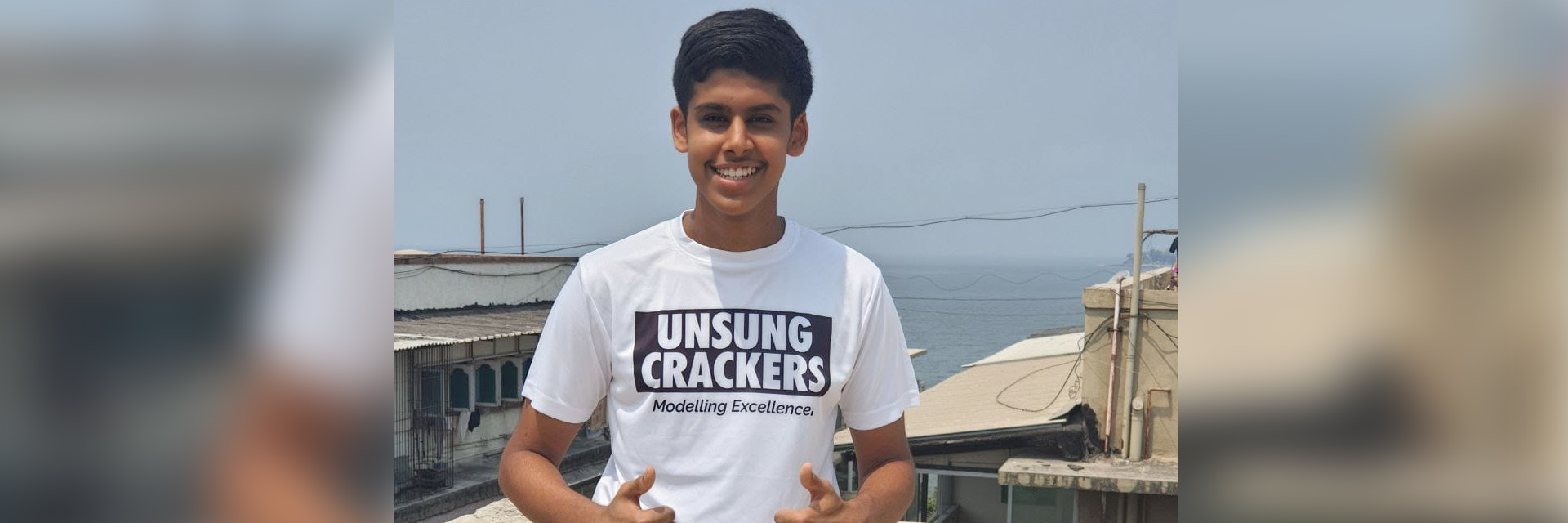(May 3, 2022) At two-and-a-half years, Anvi Vishesh Agrawal from Bhubaneshwar has become a celebrated artist with a coveted place in the World Book of Records, London for creating maximum number of paintings (72) by a toddler at such a tender age. With invitations like presenting work at exclusive art exhibition in Delhi to inauguration of childcare product stores, the toddler artist has also wrapped up a meeting with Odisha Chief Minister, Naveen Patnaik, happy to receive chocolates from him. In fact, when she was approached by Global Indian, the little artist thought it would be the chief minister again to discuss her paintings. Though cheerful, she was not ready to disclose much, saying “You are not Naveen Patnaik”.
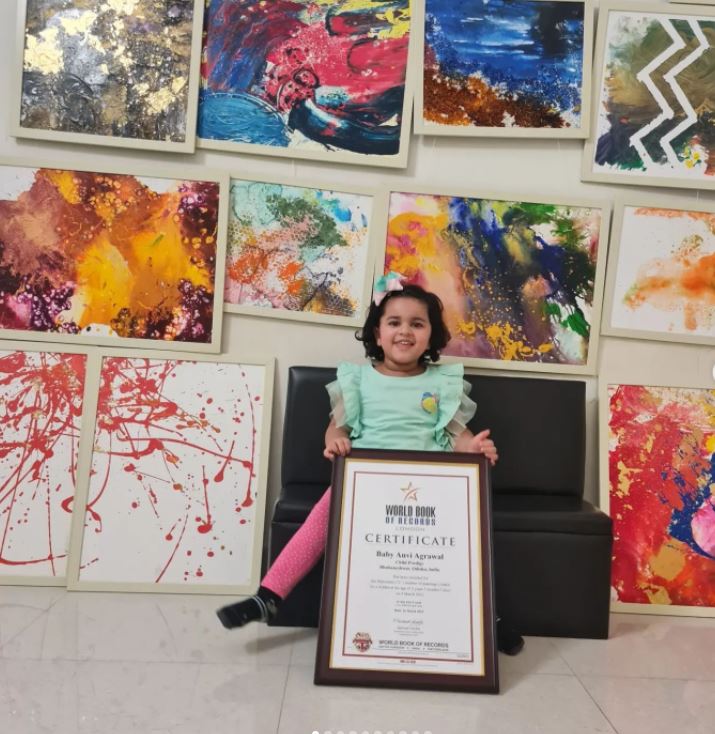
Anvi Vishesh Agrawal, award-winning little artist
The October 2019–born also found a place in the India Book of Records when she was just one year and nine months old for her exemplary vocabulary of 42 Spanish words, and knowledge of all the 42 phonic sounds. “This is an ability that children can display at three years of age but not as early as 21 months,” says her educator mother Anuradha Dalmia, adding that by then Anvi also knew the names of 26 birds, and 42 animals besides having started her abstract art journey at the age of 9 months.
Mom – the pillar
Armed with training in Montessori education and child psychology, Anvi’s mother Anuradha is the director of Indian Public School Sambalpur, a venture started by her parents, and also the director at her own venture, Little Harvard preschool in Bhubaneshwar. A strong pillar of support behind the little prodigy’s achievements, she has given her daughter the “freedom to explore and test her own limits.”
“We could observe that Anvi was keen on painting since a very young age. She used to go to the garden, come back and try to replicate the patterns of the leaves on paper. She knew all primary and secondary colours by the age of 21 months, and also knew how to draw shapes by the time she was 26 months old,” beams Anuradha with pride.
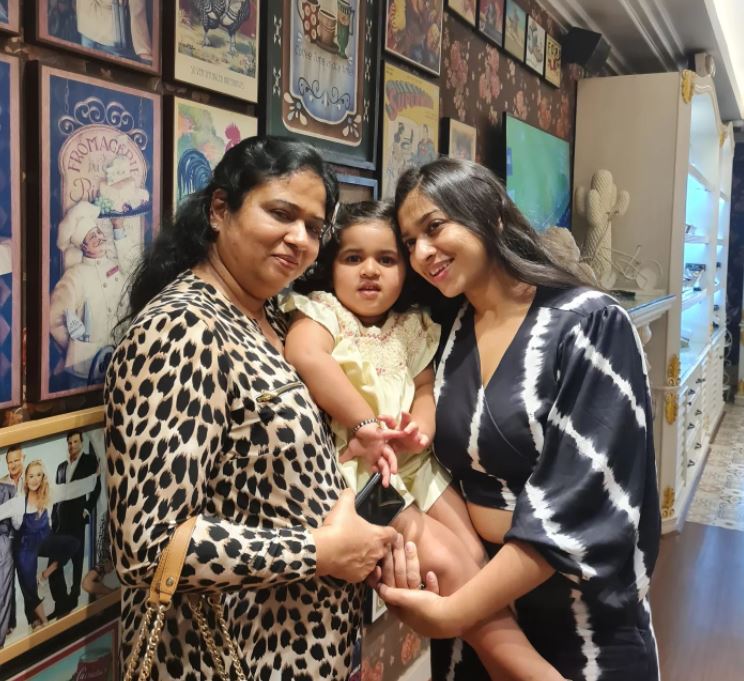

Anvi Vishesh Agrawal was given natural colours to experiment with in the beginning like beetroot mixed with flour, and the likes to create patterns. When it got ascertained that she is able to handle the liquid colours well without harming herself, she was introduced to market colours. “With the number of hours of exposure, and allowing to willingly practice, without any pressure; Anvi was able to reach this point,” tells Anuradha.
Born artist with a knack for experiments
Inquisitiveness and experimental persona of the little artist became evident when she started using many household objects to create interesting art pieces, much to the happiness and surprise of her elders. “When Anvi was gifted magnetic toys, she soiled them in colour, and rejoicingly informed, ‘magnet colour pulling’. In play, she discovered the non-brush form of painting. We later googled to find out that it’s a form of painting through which human geographical figures are created, and is quite popular abroad with people spending hours watching painters creating magic,” adds Anuradha.
Whether it was the water gun that was given to the toddler around Holi, or her mom’s hair dryer, or the icing cones for cakes being baked at home, or the kitchen wipers, Anvi applied basic science to create beautiful abstract paintings; analysing and experimenting on her own without much adult intervention. This led to stunning revelation by her parents, who upon some research found that similar forms of art with fluid colours were practiced by established artists across the world. “When she is painting, she doesn’t want to be disturbed, and even puts her play time on hold till she is finished,” says the doting mom.
View this post on Instagram
She seems to have acquired her love for the art from her grandmother, who has been into Tanjore painting with some exhibitions in Bhubaneshwar to her repertoire.
The little artist’s father, Vishesh Agrawal runs Vibha press which has been printing the Times of India and The Hindu Bhubaneshwar editions. The Delhi branch of the press has found a place in the Limca Book of Records for publishing newspapers in 42 different languages.
In-born intelligence
The keen observations of the little artist are not just confined to her world of paintings but she is also perceptive about everyday things around her. “Since she is taken to the garden quite often to water plants, if lemons in the salad are left unused, she points out, ‘it takes one month to grow, we should not waste it,’” says the proud mother.


The gifted child is already proficient in the nursery syllabus orally and her vocabulary is “fantastic”, sometimes using untaught but relevant words in the middle of conversations, to the surprise of her parents. “Either this generation is very smart or she is picking up faster,” wonders her mother, quickly adding that the reason could be her mini library of 200 books that are full of illustrations. Reading four or five of them daily is a part of her routine, refusing to go to sleep if she has not finished the day’s quota. The toddler has the tendency of repeating her favourite sentences from the books and one of those as spoken by her favourite teddy character is – “I am not tired, let’s play instead.” She merrily uses different versions of it too like, “I am not tired, let’s paint instead,” making life interesting for people around her while being completely unaware of the accolades she has already earned!
- Follow Anvi on Instagram

